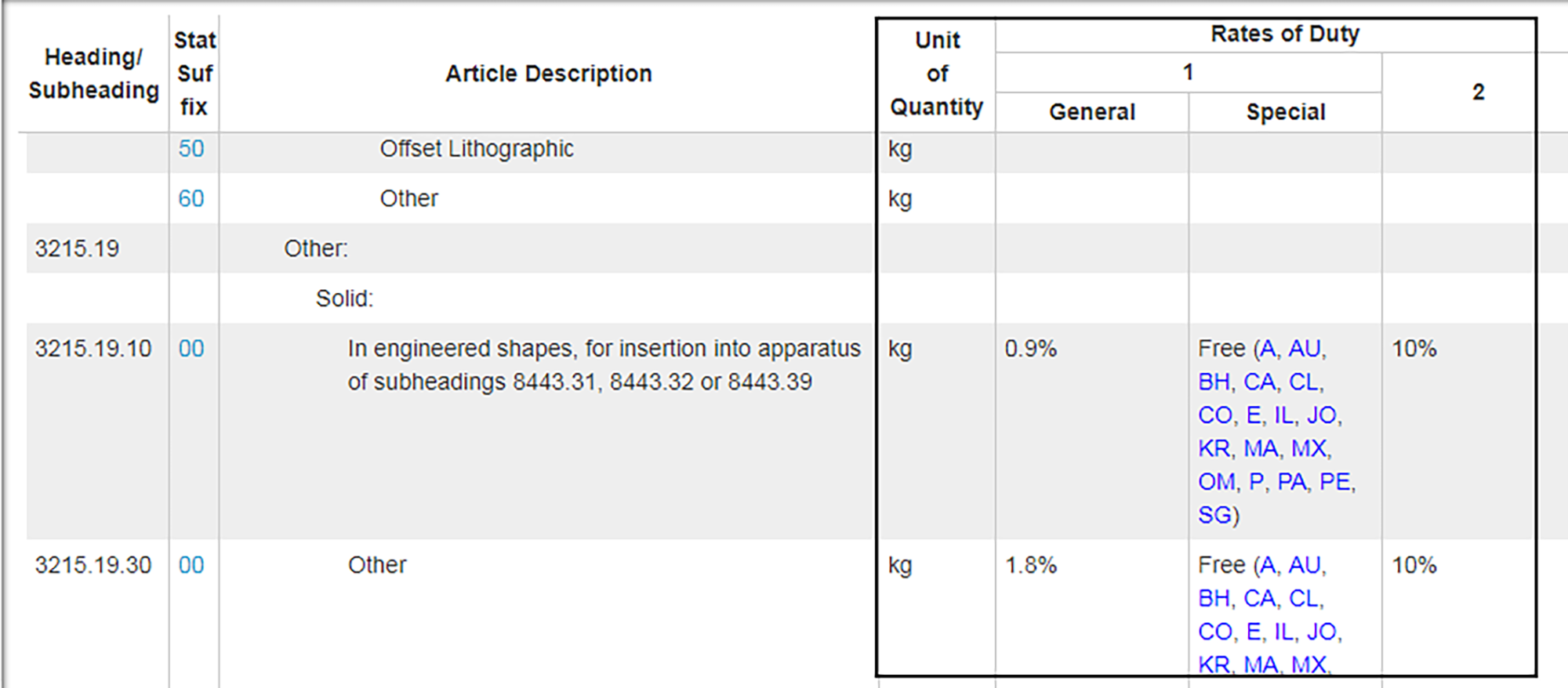Tariffs – once talked about only by policy nerds and people obsessed with international trade – are now in the news nearly every day, and, having made its way into everyday discussions, it seems more and more clients are asking: “What do tariffs mean for my business? How I learn more about my options?”
Obviously, each client’s situation is unique, but a critical “Step One” for practitioners in all situations is learning to read the Harmonized Tariff Schedule – the massive index that assigns a duty rate to almost every product conceivable.
A Little Background
First, if you didn’t know before, you probably know now: tariffs are political tools.
So, it’s not at all uncommon to see a 0% import tariff (duty) levied on products imported from countries like Germany (or the many other counties the U.S. has a free trade agreement with) but a 40% duty on the same product imported from Cuba. Therefore, it is very important to help a client understand what to import and where to import it from.
Second, it’s easier than ever to import today. Go to Alibaba.com and click “order.” But, with increased ease comes increased risk, because the law still imposes all the same requirements on your single client (an individual importing widgets from China using Alibaba) as it does a Fortune 500 company with millions of imports each year.
Reading the Harmonized Tariff Schedule
The first step to helping the client figure out the “what” and “where” is learning to read the Harmonized Tariff Schedule (HTS). The HTS is an ENORMOUS catalog that categorizes imports by number, and then assigns them a respective duty rate.
Back in the day, the HTS was available in print, and it took a while to search, but now it’s an online searchable database.
When looking at the HTS, see the columns to the right of the Article Description column. Figure 1, below, shows examples of the particular columns we are discussing, outlined in black:

Figure 1. Columns listing duties in the Harmonized Tariff Schedule are shown on the right.
The first column is Unit of Quantity. This column tells you how duties on that particular product are assessed. For example, vinyl flooring is assessed by meters squared, while commodity goods (like oranges) are often assessed by kilogram. Therefore, in the case of vinyl flooring (HTS Code 3918.10.20), a client will get charged a 5.3% duty on the invoice value of each square meter imported.
The next area lists values for Rates of Duty. This area has three parts:
General (under the label 1) tells you the general duty rate, i.e., “the general duty the U.S. charges other countries that we get along with but don’t have a free trade agreement with.” For legal nerds, this is called Most Favored Nation (MFN) treatment or a country with which the U.S. has Normal Trade Relations (NTR), and is a cornerstone concept of the World Trade Organization.
Special (under the label 1) lists the duty rate charged by the U.S. to countries with negotiated free trade agreements. There are a lot of free trade agreements out there, so be sure to check whether your client’s products' country of origin is included, since most “free” trade agreements set the duty rate as low as zero.
The column labeled 2 contains the “bad boy” duty rate that the U.S. charges on imports from countries where we do not have normal trade relations. The most recent example of a country moving from column 2 to the MFN (General) column is Vietnam. The only two countries remaining on the "bad boy" list are North Korea and Cuba.
Conclusion: What Matters
Before we can provide our clients with any useful information, we need to know how to read the HTS.
Now that you’ve learned the basics, it can be entertaining to search different products in the HTS and see their respective duty rates (and hypothesize why the rates are what they are).
Additionally, you’ll realize quickly that some very closely related products have totally different duty rates, and that minor changes to a client’s product design could have an incredible impact on their bottom line (just ask Columbia Sportswear about "nurses' pockets"). Indeed, determining what the client is actually importing (or what they should be importing) is often the most legally significant part of the process. To find out more about how important the “what” is (and if Columbia’s shirts aren’t interesting to you), check out the 2003 case of mutants vs. humans (see the case text) over the difference between a 12% or 6.8% duty rate – which Marvel won.
